Are you looking for how to fix when there has been a WordPress critical error? Don't worry we have got your covered with solution to this issue in the blog post.
Is it difficult for you to access your website's content or dashboard, impeding your daily operations and management? Don't worry; there has been a critical error on this website; you need to fix it simply by following this guide.
Dive deep with us as we first unravel the enigma behind critical errors; what exactly are they? We'll then pave the way through a comprehensive 14-step visual journey to tackle these errors hands-on.
And because understanding is half the battle, we'll delve into the root causes behind these errors in WordPress.
At the end of this blog, we'll highlight the potential aftermath of such errors on our websites and why it's imperative to address them promptly.
What Is “There Has Been a Critical Error on This Website”?
A "Critical Error" in WordPress indicates a severe problem preventing the site from loading, often stemming from plugin/theme conflicts, corrupted files, or database issues.
It interrupts site operations, and users typically see a message: "There has been a critical error on your website."
You'll often encounter this error upon activating a theme or plugin that malfunctions. When you access your website, you'll see the 'critical error' message. You can troubleshoot this using email debugging or handle it manually.
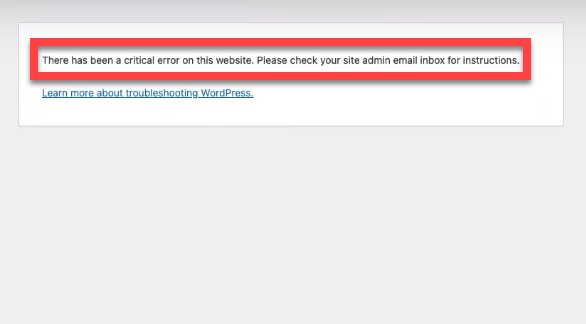
Steps to Fix WordPress Critical Error Manually
Addressing the 'Critical Error' in WordPress manually ensures greater control over the rectification process. It can lead to faster resolutions, avoids reliance on external tools, and safeguards the integrity of your website's content and design.
Now, we will learn in just 14 steps with screenshots how to fix critical errors manually. Let's go through each of these steps.
Step 1. Visit the Hosting Cpanel
In order to resolve the issues plaguing your website, it's crucial to access your hosting's control panel. Do familiarize yourself with the control panel interface.

Step 2. Click on File Manager
Upon entering, you'll be greeted with a plethora of customization options for your site. Your main objective is to locate the 'File Manager' option and select it.
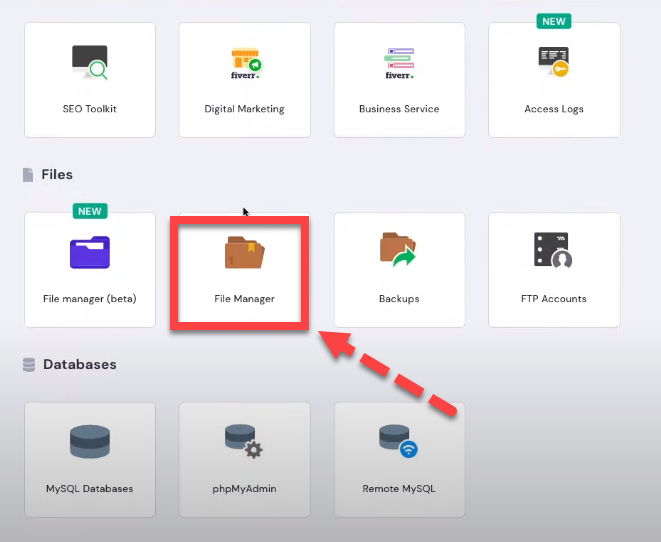
Do you want to learn?WordPress Security- Visual Step by Step Guide to Keeping Your Website Secure
Step 3. Click on Public.html
When you select 'File Manager,' you'll notice a file labeled "public.html." In the cPanel hosting control panel, "public_html" is the dedicated directory for storing website files, making them available online.
Anytime a domain is linked to a cPanel account, the contents within "public_html" are what users view upon accessing that domain. Proper management and safeguarding of this folder are pivotal for seamless website operation. Proceed by opening this 'public_html' file.
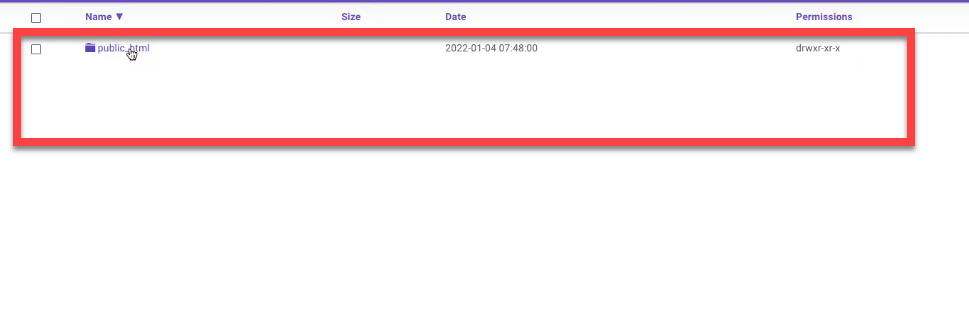
Step 4. Click on wp-config php (carefully)
Press Ctrl+F and type 'wp-config'. You'll notice several files with this name. It's imperative to cautiously locate and select the 'wp-config.php' file. Any modifications here directly impact your website, so ensure you choose the appropriate file.
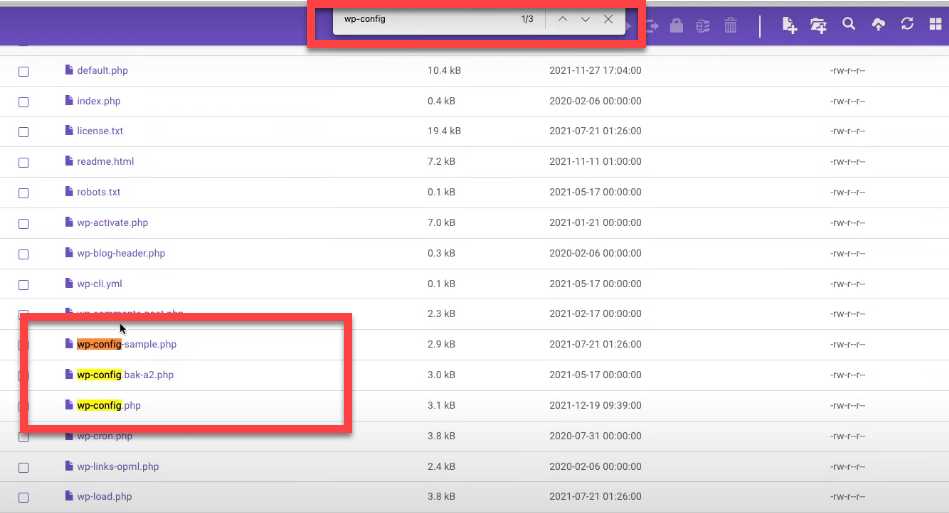
Step 5. Click on Edit
Now, right-click on the php file, which will prompt a pop-up window on your screen. Choose the 'Edit' option from this pop-up.

Step 6. Replace or Add the Code
Upon opening, the coding file will be displayed. Search for the line Define ("WP_DEBUG," true);. Occasionally, you might find this line already exists, but it reads Define ("WP_DEBUG," false) instead.

If you encounter this existing line, simply swap out false for true. If the line isn't present at all, go ahead and add it. For instance, I changed the line from Define ("WP_DEBUG," false) to Define ("WP_DEBUG," true).
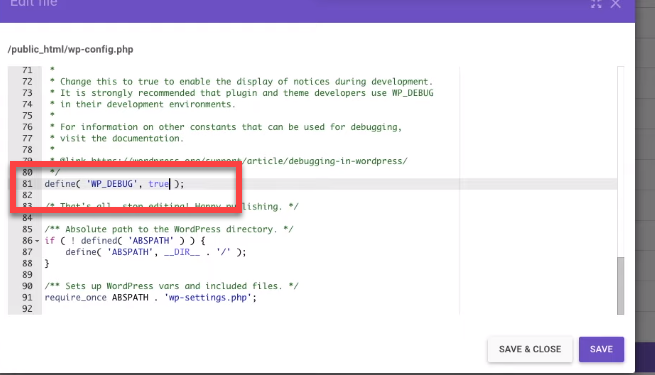
Do you want to learn?
49 Amazingly Free Blog Themes to Elevate Your Content in 2023
Step 7. Click on Save and Close
After making or replacing code in the wp-config.php file, ensure you click the 'SAVE & CLOSE' button.

Step 8. Refresh You Site
Upon visiting your site, post the code addition, a specific message will appear. This message essentially pinpoints the location of the critical error.

Step 9. Click on “wp-content” File
To proceed further, adhere to the error address displayed in the message on your website. For instance, if the address is 'public_html/wp-content,' navigate to 'public_html' and select 'wp-content.'

Step 10. Click on “themes” File
When 'wp-content' is selected, it reveals all its contained files. The error message provides a specific path, such as 'public_html/wp-content/theme/.' You should then access the 'theme' file as directed by this path.

Step 11. Rename the Specific theme or Plugin File Name
Now, examine the error address 'public_html/wp-content/theme/rttheme19/'. Click on the specific theme file; in my example, it's 'rttheme19' where the error resides.
Your situation might differ; you could have an error in a plugin, in which case, follow the error address relevant to your circumstances."
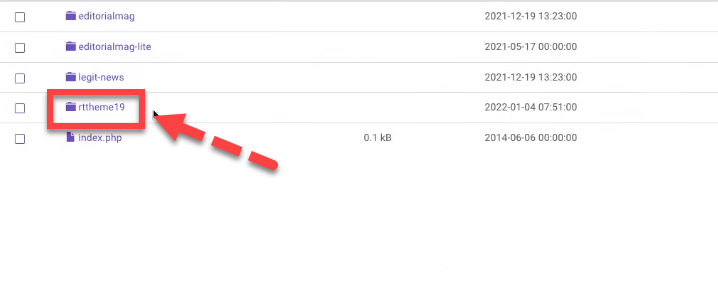
Next, right-click on 'rttheme19' or whatever theme or plugin name is identified in your error address. From the pop-up menu, select "Rename."

The only action required here is to rename the file. You can simply insert a comma or make a minor change, then hit the 'Rename' button. This will disable the theme from the backend, effectively stopping it from causing further issues."
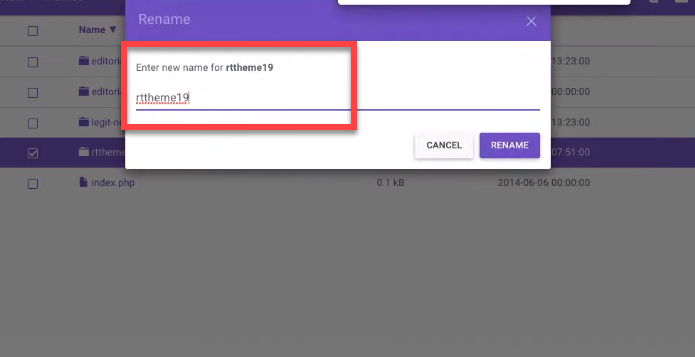
Step 12. Refresh the Page Again
To check if the issue is resolved or not. Now, you need to visit the website and then refresh this page.

After completing the renaming process, upon refreshing the page, you might encounter a message stating, "No matching template found." This indicates that the system couldn't find the previous settings due to the changes made. To address this, navigate back to the 'WP Admin' page of your website to reset or adjust configurations.

Step 13. Active another theme or Plugin
Since the theme you had initially activated seems to be malfunctioning, it's essential to set a different, functional theme for your website.
Navigate to the theme section and select a reliable alternative. Once you've chosen one, simply click on the 'activate' button to implement the new theme.
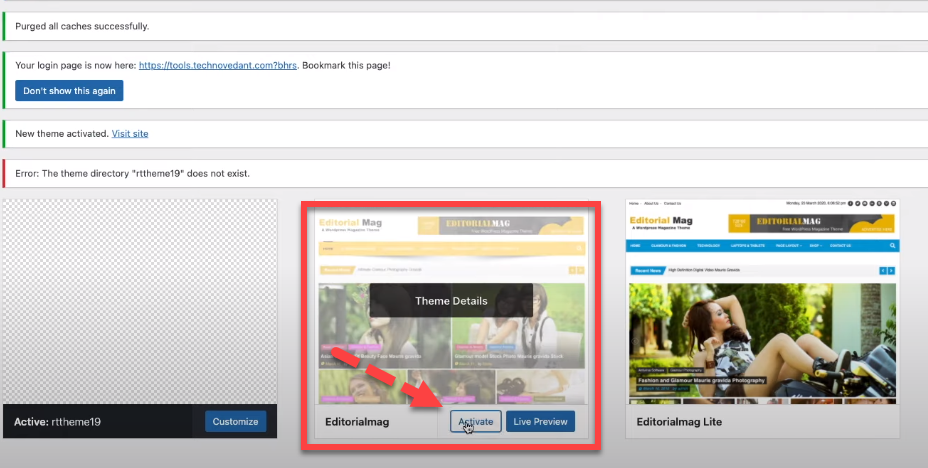
Do you want to learn more?
A Guide to Choosing the Best WordPress Theme
Step 14. Issue Resolved
Now, navigate back to your website's main page and give it a quick refresh. You'll notice that your website is now up and running smoothly, displaying the newly activated theme to all visitors.
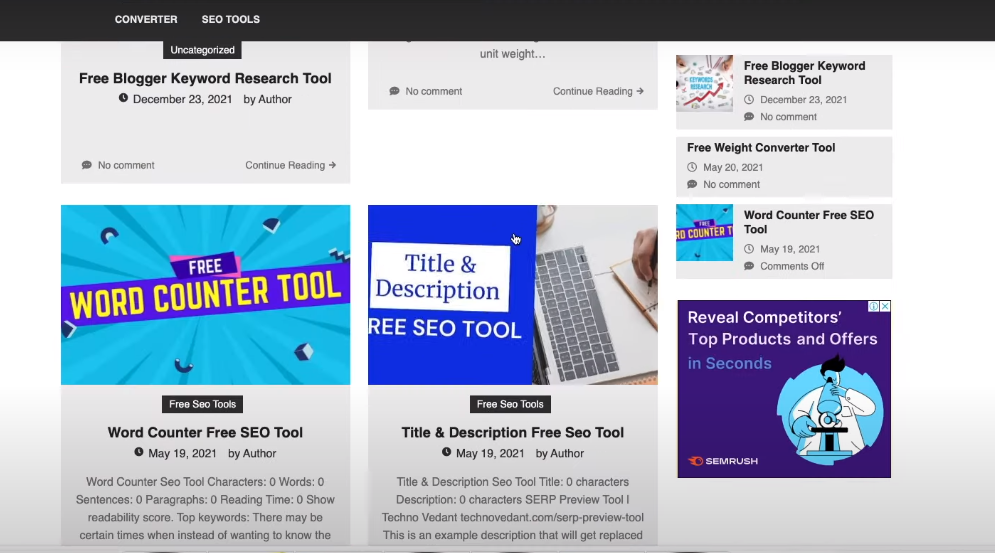
Do you want to learn?
How to Edit Pages in WordPress (Updated 2023 Guide)
What Are the Reasons for Occurring Critical Errors in WordPress
- Plugins Conflicts: Installing incompatible plugins or plugins with coding errors can break the site. Also, conflicts can arise when two or more plugins interfere with each other.
- Themes: Installing a poorly coded theme or one that isn't compatible with your version of WordPress can lead to critical errors.
- Core WordPress Files: Accidentally deleting or modifying core WordPress files can cause issues. Always be careful when working directly with files.
- Hosting Issues: Server-side problems, including issues with your hosting provider, memory limitations, or server downtimes, can result in critical errors.
- Database Errors: Corruptions in the WordPress database can prevent the site from loading. This might be due to faulty plugins, hacks, or server crashes.
- PHP Memory Limit: When your site exceeds the PHP memory limits set by your provider, it can crash.
- Incompatible Updates: Sometimes, updating WordPress or its plugins and themes can introduce incompatibilities, especially if they are not tested together.
- Coding Errors: Mistakes in custom code snippets, either in a theme's functions.php file or in a custom plugin, can trigger errors.
- External Services: Sometimes, third-party services integrated into the site, like CDNs or external APIs, might face issues impacting your site.
- Security Breaches: Malware or hacking attempts can corrupt files or introduce rogue scripts.
Detrimental Effects of Critical Error on Your Website
- Website Downtime: The most obvious impact is that your site goes offline, making it inaccessible to visitors. Prolonged downtimes can hurt user trust and affect return visits.
- SEO Impact: Search engines may de-index pages that are consistently unavailable or present errors. This can negatively affect your website's search ranking.
- Loss of Revenue: If you run an e-commerce site or rely on online bookings or registrations, any downtime translates to direct financial loss.
- Data Loss: In some cases, critical errors, especially those related to database issues, might risk data integrity or lead to data loss.
- Decreased User Trust: Regular visitors or customers might lose trust in a website that frequently displays errors.
- Increased Bounce Rate: New visitors encountering an error are likely to leave immediately, increasing your site's bounce rate.
- Difficulty in Troubleshooting: Depending on the nature of the error, identifying the root cause can be challenging, especially if multiple plugins or theme functions conflict.
- Security Risks: Some errors might expose sensitive information about your website's structure, making it a potential target for malicious activities.
Wrapping Up
Critical Errors are significant roadblocks that halt a WordPress site's functionality. An error can occur due to a variety of factors, such as plugin conflicts, theme errors, and server-related issues. They demand prompt attention.
Not addressing them timely can lead to site downtimes, SEO penalties, revenue loss, and a significant decrease in user trust. Through a systematic 14-step manual process, users can effectively diagnose and address the root cause of these errors.
Accessing the hosting control panel and navigating through specific files like 'public_html' and 'wp-config.php' is vital to this process.
Renaming certain theme or plugin files may serve as a remedy, yet users must tread carefully, being cognizant of the impact each change might bring.
As WordPress continues to evolve, ensuring its smooth operation is paramount for site owners, underscoring the importance of being equipped to address such critical issues efficiently and effectively.
Frequently Asked Questions
How do I fix a WordPress critical error?
Address a WordPress critical error by navigating through your hosting control panel to the 'File Manager', then the 'public_html' folder, and editing the 'wp-config.php' file to enable debugging. Follow further steps like renaming problematic theme or plugin files as needed.
What is a WordPress critical error on this website when accessing WP admin?
A WordPress critical error when accessing WP admin typically indicates a severe problem such as a malfunctioning plugin or theme that prevents the admin dashboard from loading.
What is critical error on this website WordPress plugin update?
This error usually occurs when a plugin update conflicts with other plugins or the WordPress core, causing the site to stop functioning properly.
What causes when there has been critical error on this website occurred?
Critical errors can stem from plugin conflicts, theme malfunctions, corrupted files, database issues, or exceeding PHP memory limits set by your hosting provider.
Is a critical error a fail?
Yes, a critical error signifies a failure in the website’s operations, often due to incompatible or faulty code that disrupts site functionality until resolved.
















.svg)
.svg)
.svg)

